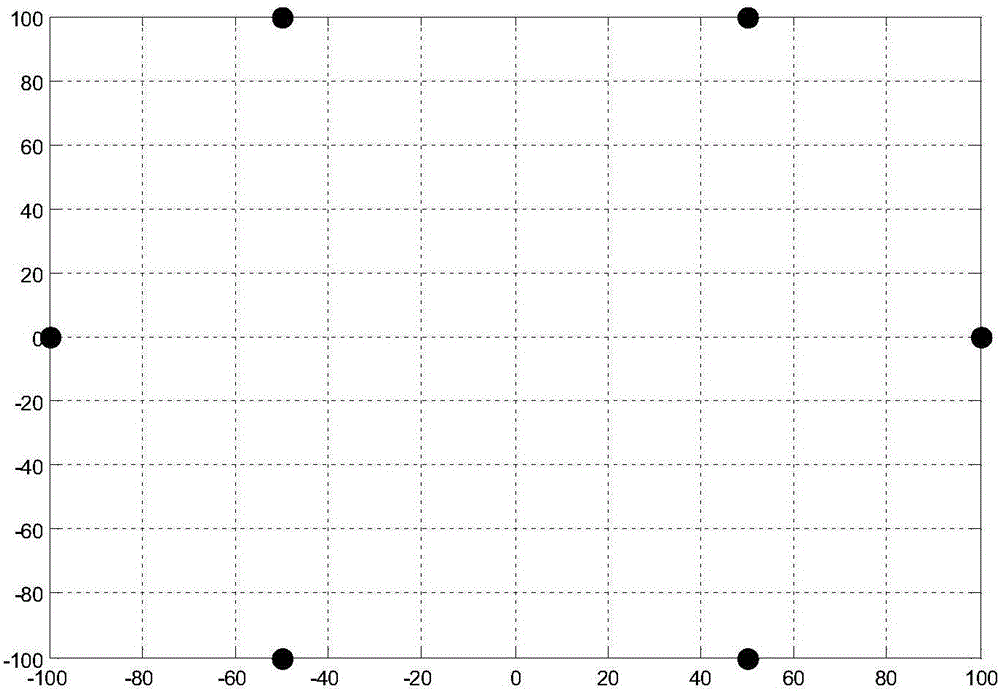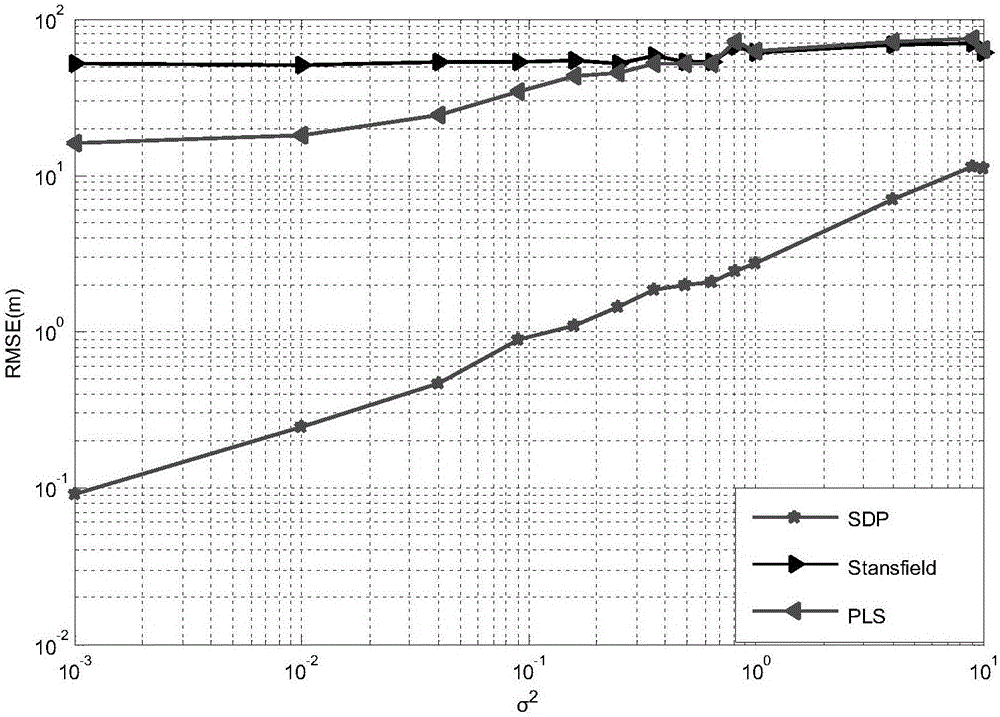AOA-based two-dimensional wireless sensor network semi-definite programming positioning method
A wireless sensor and semi-definite planning technology, applied in positioning, radio wave measurement systems, instruments, etc., can solve problems such as reducing the positioning accuracy of target nodes, and achieve the effect of improving positioning accuracy
- Summary
- Abstract
- Description
- Claims
- Application Information
AI Technical Summary
Benefits of technology
Problems solved by technology
Method used
Image
Examples
Embodiment Construction
[0018] In this method, the reference nodes of the two-dimensional wireless sensor network adopt an elliptical distribution form as follows: figure 1 , that is, the reference nodes are arranged in a rectangular area, where the target node is set to X=[0,25], the number of reference nodes is set to 6, and the position coordinates of the reference nodes are expressed as: X 1 =[-100,0],X 2 =[-50,100],X 3 =[-50,-100], X 4 =[50,100],X 5 =[50,-100],X 6 =[100,0].
[0019] We will perform M on the proposed localization algorithm by MATLAB c = 1000 Monte Carlo simulation experiments, and compared with existing positioning algorithms. We mainly use the positioning root mean square error (RMSE) to compare and evaluate the proposed algorithm of the present invention and the existing algorithms. The expression of RMSE is as follows:
[0020] R M S E = E [ ( ...
PUM
 Login to View More
Login to View More Abstract
Description
Claims
Application Information
 Login to View More
Login to View More - R&D
- Intellectual Property
- Life Sciences
- Materials
- Tech Scout
- Unparalleled Data Quality
- Higher Quality Content
- 60% Fewer Hallucinations
Browse by: Latest US Patents, China's latest patents, Technical Efficacy Thesaurus, Application Domain, Technology Topic, Popular Technical Reports.
© 2025 PatSnap. All rights reserved.Legal|Privacy policy|Modern Slavery Act Transparency Statement|Sitemap|About US| Contact US: help@patsnap.com



